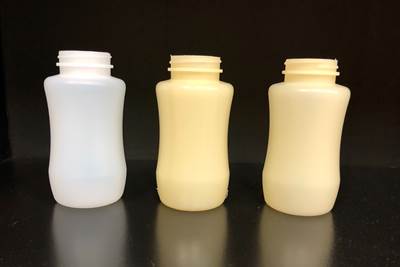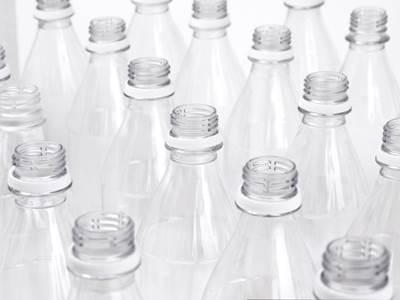Plastics Use in the Packaging Industry
Plastics are used to manufacture flexible packaging and rigid packaging in applications like caps, closures, bottles, film, and sheet.

ESSENTIAL READING
VIEW ALLHow to Extrusion Blow Mold PHA/PLA Blends
You need to pay attention to the inherent characteristics of biopolymers PHA/PLA materials when setting process parameters to realize better and more consistent outcomes.
Read MoreBest Methods of Molding Undercuts
Producing plastics parts with undercuts presents distinct challenges for molders.
Read MoreSolve Four Common Problems in PET Stretch-Blow Molding
Here’s a quick guide to fixing four nettlesome problems in processing PET bottles.
Read MoreFormulating LLDPE/LDPE Blends For Abuse–Resistant Blown Film
A new study shows how the type and amount of LDPE in blends with LLDPE affect the processing and strength/toughness properties of blown film. Data are shown for both LDPE-rich and LLDPE-rich blends.
Read MoreProtolabs Addresses How to Survive a Pandemic with Digital Manufacturing
Protolabs survey results examine product development and the supply chain.
Read MoreWhat Plastics Processors Need to Know about Tax Reform and Equipment Acquisition
The Tax Cuts and Jobs Act of 2018 (TCJA) is positioning plastics processors for more growth and profitability following the most recent Plastics Processing Index showing the best quarter since 2013 when the index began.
Read MoreLatest Packaging News And Updates
Radial Wall-Thickness Control System Comes to the Americas
W. Müller USA now offers Feuerherm PWDS system for extrusion blow molding in North and Sourth America.
Read MoreHigh-Performance Resealable Lidding BOPET Film
Terphane’s Resealphane is the company’s latest innovation within its Selaphane product line.
Read MoreResearchers Find Foaming Bioplastics Reduce Environmental Persistence
Seawater testing shows rapid degradation for potential polystyrene substitute.
Read MoreUS Plastics Pact Updates Postconsumer Recycled Content Toolkit
Toolkit is intended to help converters to reduce virgin plastic consumption by incorporating recycled content.
Read MoreAll-Electric Stretch-Blower for up to 3L PET Bottles
PET Technologies debuts compact APF-Max 2L liner reheat machine with quick changeovers, NIR heating and blowing-air recovery.
Read MoreLighter, Higher Performance Base Design for Premium rPET Bottles
Sidel’s StarLITE-R Premium base for thicker rPET bottles ensures bottle stability in high-speed production, while saving energy.
Read MoreFeatured Posts
Research Deems Bioplastics, Wood Pulp a Sustainable, Economic Alternative for Rigid Packaging
Farrel Pomini and FPInnovations produce biodegradable compound for molding, extrusion and thermoforming applications.
Read MoreCustom Molder Pivots When States Squelch Thriving Single-Use Bottle Business
Currier Plastics had a major stake in small hotel amenity bottles until state legislators banned them. Here’s how Currier adapted to that challenge.
Read MoreFor Extrusion and Injection-Blow Molders, Numerous Upgrades in Machines and Services
Uniloy is revising its machinery lines across the board and strengthening after-sales services in tooling maintenance, spare parts and tech service.
Read MoreMultilayer Solutions to Challenges in Blow Molding with PCR
For extrusion blow molders, challenges of price and availability of postconsumer recycled resins can be addressed with a variety of multilayer technologies, which also offer solutions to issues with color, processability, mechanical properties and chemical migration in PCR materials.
Read MorePHA Compound Molded into “World’s First” Biodegradable Bottle Closures
Beyond Plastic and partners have created a certified biodegradable PHA compound that can be injection molded into 38-mm closures in a sub 6-second cycle from a multicavity hot runner tool.
Read MoreSee a 7-Layer Stretch Line Controlled by AI
Colines producing high-tech stretch film on a line with an artificial intelligence control package.
Read MoreFAQ: Packaging
The following are four other common issues, applicable to both single- and two-stage processes.
-
Pearlescence and haze
-
Insufficient top-load strength
-
Insufficient base clearance or rocker bottom
-
Drop-impact failure






































